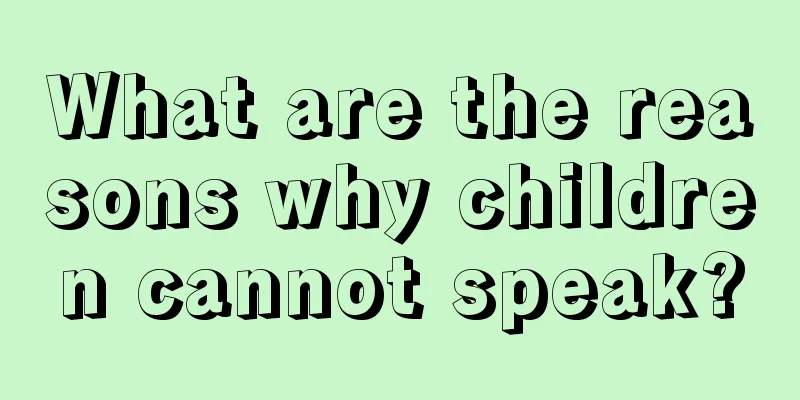Differential diagnosis and treatment of jaundice

|
On average, nine out of every nine newborns will develop jaundice, so jaundice is now attracting more and more attention. Many people don’t understand jaundice. In fact, there are two main types of jaundice: physiological jaundice and pathological jaundice. Among them, physiological jaundice is the most common and has no effect on children, but pathological jaundice is serious and you must go to the hospital for examination. So how do we differentiate, diagnose and treat jaundice? 1. Diagnosis 1. The main symptoms are yellow eyes, yellow body and yellow urine, among which yellow eyes are the essential symptom. 2. Often accompanied by abdominal distension, poor appetite, nausea, flank pain, heaviness in limbs, etc. 3. There is often a history of improper diet, contact with hepatitis patients, or taking drugs that damage the liver, as well as excessive fatigue and other inducements. 4. Serum total bilirubin, direct bilirubin, urine bilirubin, urobilinogen, serum alanine aminotransferase, aspartate aminotransferase, as well as B-ultrasound, CT, cholecystography and other examinations are helpful for diagnosis and differential diagnosis. 5. Both chlorosis, jaundice and chlorosis have yellow body color, so they need to be distinguished. The causes of jaundice are invasion of seasonal pathogens, damage due to diet, weak spleen and stomach, sand and gravel, stasis, etc.; the causes of chlorosis are heavy blood loss, long-term illness and spleen deficiency, etc. The pathogenesis of jaundice is the obstruction of dampness and turbidity, dysfunction of the spleen, stomach, liver and gallbladder, bile not flowing through the normal channels, and overflowing with the blood; the pathogenesis of chlorosis is spleen deficiency that cannot transform qi and blood, or excessive blood loss, leading to qi and blood deficiency and malnutrition of the skin. Jaundice is characterized by yellow eyes, body and urine; chlorosis is characterized by yellowing of the body and face, which becomes dry and dull, but the eyes and urine are not yellow, and it is accompanied by obvious symptoms of qi and blood deficiency, such as dizziness, tinnitus, palpitations and insomnia. The key to distinguishing the two is the presence or absence of yellow in the eyes. 2. How to care for baby jaundice 1. Feed more to allow the baby to expel meconium as soon as possible In the early stages, we need to feed the newborn as soon as possible so that the meconium can be excreted as soon as possible, because the meconium contains a lot of bilirubin. If the meconium is not excreted cleanly, the bilirubin will be reabsorbed into the blood through the special enterohepatic circulation of the newborn, causing increased jaundice. How to tell whether the meconium is discharged cleanly? The main thing is to see if the meconium changes from black to yellow, which means it is completely excreted. 2. Feed more milk to give the newborn enough water The way to determine whether a newborn's fluid intake is sufficient is to look at the newborn's urine. Generally, a normal newborn urinates 6-8 times a day. If the number is less than that, it is possible that his fluid intake is insufficient. Too little urination is not conducive to the excretion of bilirubin. We should ensure the fluid intake of newborns. Generally, the meconium of newborns should be discharged within 2-3 days, which can reduce the degree of jaundice. |
<<: How high jaundice affects intelligence
>>: How to test for jaundice at home
Recommend
Symptoms of idiocy
Not everyone has a healthy physique in life. Many...
Children's nutritious juice combination
During the entire process of a child's growth...
How to remove black spots on baby teeth?
Black spots on baby's teeth may be caused by ...
What are the foods that nourish the kidneys for children?
Children may also have poor kidney function. Chil...
What are the symptoms of high muscle tension in newborns?
The health status of newborns is the most concern...
Is it better for babies to take cod liver oil or vitamin D?
The healthy growth of babies is a very important ...
Treatment and prevention of stuttering in children, the harm of stuttering in children
Children who are very talented in language not on...
Spontaneous cure rate of hepatitis C in newborns
Some children will develop hepatitis C after birt...
What to do if your child vomits after falling
If a child vomits after falling, you need to take...
Why are the sides of the baby's nose blue?
Have you ever noticed that the baby's nose tu...
Is it a problem if my baby has a fever of 37 degrees?
Nowadays, every child is the apple of the eye of ...
2 year old baby retching
If you find that your baby is retching, you must ...
What are the symptoms of rheumatic fever in children and juvenile rheumatoid arthritis?
Rheumatoid arthritis causes pain and suffering fo...
What causes glaucoma in children?
The physical health of children is very important...
Baby walks unsteadily and legs are weak
Learning to walk is an indispensable stage in a b...









